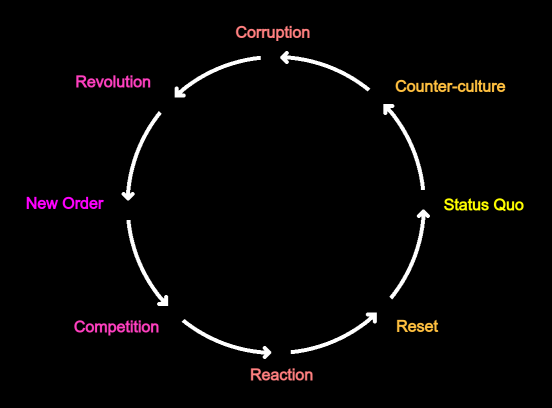
Neo-Obscurantism is born as a reaction against the natural push for progress and emancipation of people and the failure of the traditional ideologies of conservation to suppress it.
For the vast majority of recorded history, humanity has lived under the heel of powerful oligarchies who kept exploiting people for their own personal gain; however, mantaining this system through sheer force was extremely difficult without a way to keep people from revolting or even just questioning the status quo, and for countless centuries religion has been the main way to achieve this result through the exploitation of the masses' ignorance and irrationality.
For this reason, science has almost always been fiercely opposed by the dominant power, since the critique of the traditional religious ideologies would inevitably lead to the critique of the entire social system based on them.
As the superiority of scientific thought became more and more evident and the new ideologies made people more and more conscious about their dignity and rights, traditional religions and values gradually lost more and more credibility, until they became no longer viable as a tool of mass manipulation, forcing the dominant elites to resort to something else in order to mantain their power.
This "something else" was ironically found precisely inside the new arising ideals of reason and progress that previously caused their demise. What made this possible was the fact that, despite people gradually helding the new values in higher and higher regard, very few had a deep understanding of what they actually meant; all they understood was that, whenever their condition improved, magical words such as "science", "reason", "freedom" and "democracy" always kept being called in cause; with the passage of time these words gradually came to be worshipped just like the ancient Gods, while their actual content gradually came to be entirely forgotten, turning them into empty shells anyone could hide in in order to justify whatever they wanted with very few noticing and, ultimately, the perfect substitutes for the ancient religions.
In short, Neo-Obscurantism exists as the attempt by the ancient obscurantist elites to regain their lost power and hegemony by hiding under the banner of the very ideals that brought their defeat.
Neo-Obscurantism can be historically contextualized as a phase in a cycle of self-perpetuation of the political/economic powers:

The following are 2 historical examples of this cycle, illustrating their various phases:
XVIII/XIX centuries | XIX/XX centuries |
Phase A: Status Quo | |
Ancién Regime | Imperialism |
Phase B: Counter-culture | |
The Enlightenment | Socialism |
Phase C: Corruption | |
Jacobinism | Marxism-Leninism |
Phase D: Revolution | |
French Revolution | Russian Revolution |
Phase E: New Order | |
Age of Terror | "Real socialism" |
Phase F: Competition | |
Monarchies (+ Illuminated dispotism) versus Republics | Market economies (+ Welfare state) versus Planned economies |
Phase G: Reaction | |
Defeat of Napoleon | Fall of the URSS |
Phase H: Reset | |
Restauration | Globalization |